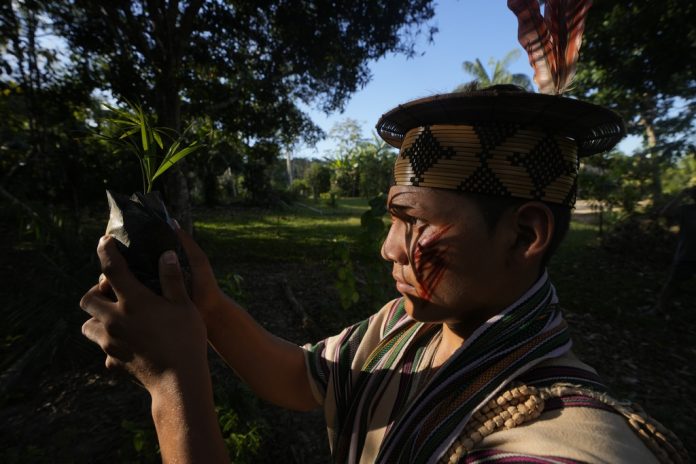APIWTXA VILLAGE, Brazil (AP) — The Ashaninka tribe of Amonia River live in a largely preserved area of Brazil’s western Amazon rainforest. Over the past three decades, they have taken back their territory from cattle farmers and loggers, replacing pasture with fruit and timber trees, the sacred Ayahuasca vine, acai palm trees and medicinal plants.
With their autonomy secured, the Ashaninka are now working to share their experience with neighbors to protect the whole region from deforestation and overexploitation of its natural resources. In 2016, an Ashaninka was elected mayor of nearby Marechal Thaumaturgo, the first Indigenous to achieve this in Western Amazon’s Acre state.
Now, an Ashaninka-led regional organization has secured a $6.8 million grant to improve territory management in neighboring Indigenous territories, collectively an area the size of the U.S. State of Delaware.
Here’s what to know:
Protecting land
Thirty-two years ago, following a long struggle for recognition, Brazil’s federal government created the Ashaninka territory of Amonia River. Loggers and cattle farmers who had hired Indigenous people, often having them work in slave-like conditions, were forced to leave.
The Ashaninka transferred their main village, Apiwtxa, to an abandoned pasture in a strategic location for surveillance. There, they started reforestation and pursued self-sufficiency through food production while protecting the territory from loggers and hunters.
The Piyãko family
The Piyãko family has led the Ashaninka’s transformation. In 2016, Isaac Piyãko was the first, and so far only, Indigenous mayor elected in Acre state. That ended the traditional political dominance by rubber barons, loggers and farmers. Four years later, Piyãko was reelected. Meanwhile his brother, Francisco Piyãko, is the mastermind of a project to share Apiwtxa’s experience with neighboring Indigenous territories.
Climate change
The Jurua Basin has been severely affected by extreme weather. Last year, during the Amazon’s record drought, the Amonia River was so warm that for the first time the Ashaninka stopped bathing in its waters, and thousands of fish died. A few months later, historic flooding destroyed crops across the region and swept away a fish farm. This year, Amazon communities are again suffering from widespread drought.
____
The Associated Press’ climate and environmental coverage receives financial support from multiple private foundations. AP is solely responsible for all content. Find AP’s standards for working with philanthropies, a list of supporters and funded coverage areas at AP.org.
Source: post





